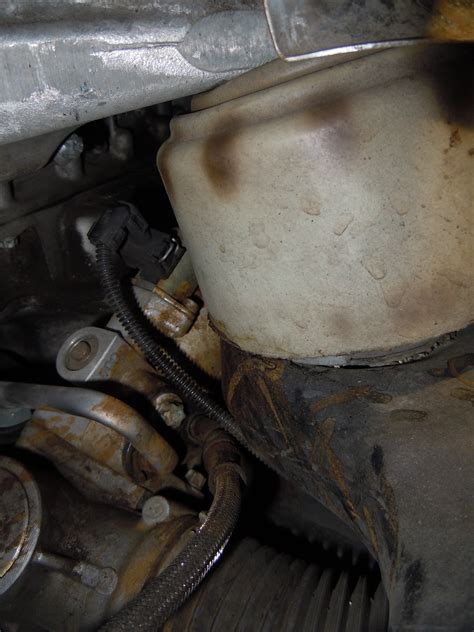Discover engine mounts: causes of leaks, signs of leakage, their impact on vehicle performance, and how to repair them effectively.When it comes to the smooth operation of your vehicle, engine mounts play a crucial yet often overlooked role. These essential components secure the engine to the chassis, ensuring proper alignment and minimizing vibrations. However, engine mounts can sometimes develop leaks, leading to a host of problems that affect both performance and safety. In this blog post, we will explore what engine mounts are, delve into the common causes of leaks, identify the signs of leakage, and discuss the potential impact on your vehicle’s performance. Finally, we’ll provide insights on how to effectively repair leaking engine mounts, helping you keep your vehicle running efficiently and safely on the road. Whether you’re a seasoned car enthusiast or a casual driver, understanding these aspects can save you from costly repairs down the line.
What Are Engine Mounts?
Engine mounts are essential components in modern automobiles, serving the critical purpose of securing the engine to the vehicle’s frame while simultaneously absorbing vibrations and shocks produced during engine operation, which ensures a smoother and more comfortable driving experience for the passengers.
The construction of engine mounts typically involves materials such as rubber or polyurethane, both of which are designed to effectively dampen vibrations; however, over time, various factors including wear and tear, exposure to extreme temperatures, and engine movement can lead to the degradation of these materials, resulting in the potential for issues like leaking fluids or increased vibrations that can be detrimental to the overall performance of the vehicle.
Properly functioning engine mounts not only help maintain the alignment of the engine but also play a role in minimizing the noise and vibration experienced in the cockpit, contributing to the overall quality of the driving experience; thus, understanding their function is crucial for vehicle owners aimi
Causes of Engine Mount Leaks
Engine mounts, crucial components designed to secure the engine to the vehicle’s frame, often experience wear and tear over time due to several factors, leading to leaks that can compromise their functionality and overall vehicle performance; among the most common causes of engine mount leaks are excessive engine vibrations, which occur as the engine operates, resulting in stress and potential failure of the mount’s rubber material.
Another significant cause of engine mount leaks is the aging of rubber components, where the natural degradation of the rubber, accelerated by exposure to heat, oil, and other environmental factors, eventually leads to cracking and loss of fluid retention capability; additionally, materials such as oil and coolant can seep into the engine mounts themselves, exacerbating the deterioration process and increasing the likelihood of leaks as the rubber becomes saturated and weakens.
Furthermore, improper installation or misalignment of the engine mount can contribute to the development of leaks; when engine mounts are not positioned correctly, they may be subjected to undue stress during engine operation, leading to premature failure and the possibility of leakages that could affect the engine’s overall stability and longevity, ultimately presenting a need for timely inspection a
Signs of Engine Mount Leakage
Engine mounts serve a critical role in your vehicle’s operation by securing the engine to the chassis and absorbing vibrations, but when these mounts begin to wear out or develop leaks, several signs can indicate that trouble is brewing beneath the hood.
One of the most noticeable signs of engine mount leakage is an increase in engine vibrations, which you may feel more intensely through the steering wheel or accelerator pedal, as worn mounts allow the engine to shift and move excessively during driving, leading to a jarring and uncomfortable experience while on the road.
Another common indicator is the presence of visible fluid leaks under the vehicle, particularly if you notice any oil-like substance pooling under the engine’s area, suggesting that the rubber or silicone material used in the mounts has deteriorated and is no longer effectively containing the engine’s movement or fluid, leading to increased strain on the remaining components.
Additionally, unusual noises, such as clunking or banging sounds at the front of the car while driving over bumps or making turns, can also be a sign that your engine mounts are failing, since the mounts are unable to properly absorb the torque and vibrations, resulting in the engine hitting against the chassis.
Lastly, if you experience any noticeable changes in vehicle alignment, where the steering and suspension feel off or the car pulls to one side, it might be a symptom of weakened engine mounts affecting the overall balance of the vehicle, further underscoring the importance of addressing any potential leaks or failures promptly to ensure optimal performance and safety.
Impact on Vehicle Performance
The impact of leaking engine mounts on vehicle performance can be quite significant, as these components play a crucial role in stabilizing the engine while also providing necessary insulation against vibrations that can adversely affect other parts of the car. When engine mounts begin to leak, the structural integrity of the engine becomes compromised, resulting in increased vibrations that can lead to an array of problems, not only for the engine but also for the overall performance of the vehicle.
In addition to increased vibrations, one of the key ramifications of engine mounts leaking is the potential misalignment of the engine itself, which can cause stress on various components such as the transmission and exhaust system, ultimately leading to premature wear and tear. As the engine moves more than it should, the once efficient transfer of power becomes disrupted, resulting in diminished fuel efficiency, inadequate acceleration, and even steering issues, which can pose safety risks for the driver and passengers alike.
Moreover, the longer the leaking engine mounts go unattended, the more severe the consequences will become, as the additional force exerted on engine components could culminate in expensive repairs that might include not only the replacement of the engine mounts themselves but also the rectification of any subsequent damage caused by the misalignment, illustrating just how critical it is to address this issue promptly.
Repairing Leaking Engine Mounts
When it comes to the repairing of leaking engine mounts, it’s essential to recognize that engine mounts play a crucial role in maintaining the overall integrity and functionality of a vehicle, as they help secure the engine to the vehicle’s frame while absorbing vibrations, allowing for a smoother ride and a reduction in noise levels.
The repair process for leaking engine mounts typically begins with a thorough inspection to identify the specific cause and extent of the leakage, which can stem from various factors such as age, wear and tear, or exposure to harsh conditions, and once the leaking mount has been identified, the technician may decide to either repair it, which might involve sealing small leaks, or replace it entirely for larger issues, and this decision is often influenced by the mount’s condition and the overall cost-effectiveness of each option.
During the replacement process, it is vital that all necessary precautions are taken to ensure the vehicle remains stable while the mounts are being removed, as failing to do so can lead to further complications; additionally, ensuring that the new mounts are installed correctly is crucial, as improper alignment can result in more significant issues down the road, underscoring the need for skilled professionals in this critical aspect of vehicle maintenance.
Frequently Asked Questions
What are engine mounts, and why are they important?
Engine mounts are components that secure the engine to the vehicle’s chassis, providing stability and reducing vibrations. They are crucial for maintaining proper alignment and performance.
What are the common signs of leaking engine mounts?
Common signs of leaking engine mounts include excessive engine vibration, unusual noises during acceleration or deceleration, and visible fluid leakage near the mounts.
How can leaking engine mounts affect vehicle performance?
Leaking engine mounts can lead to increased vibrations, engine misalignment, and potential damage to other components, ultimately affecting the overall performance and handling of the vehicle.
What causes engine mounts to leak?
Engine mounts may leak due to wear and tear over time, exposure to high temperatures or chemicals, or physical damage from impacts or accidents.
Can leaking engine mounts be repaired, or do they need to be replaced?
In most cases, leaking engine mounts need to be replaced rather than repaired. It’s essential to consult with a mechanic for a thorough assessment.
How much does it typically cost to replace leaking engine mounts?
The cost of replacing leaking engine mounts can vary widely based on the make and model of the vehicle, but it generally ranges from $200 to $700, including parts and labor.
What should I do if I suspect my engine mounts are leaking?
If you suspect your engine mounts are leaking, it’s advisable to have your vehicle inspected by a qualified mechanic as soon as possible to prevent further damage and ensure your vehicle remains safe to drive.





